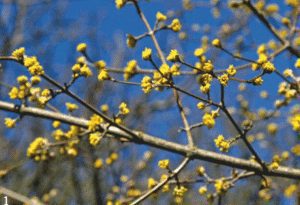Blooming Life
One of the most uplifting experiences in the natural world is the sight and, sometimes, Blossom’s scent.
Whether you live in the heart of the city or the countryside, you are bound to come into contact with trees that, for a short but spectacular time, they are transformed as Blossom opens along their boughs and branches.
The frothiness of sloe and hawthorn highlighting field edges is a magical experience.
To walk beneath cherry trees in a city street and look up to see a clear azure sky through their pretty pink petals is to be transported to another place.
Everything seems to want to join in the festival of froth. Fruit trees everywhere are smothered in flowers.
Apple orchards, in particular, are bursting with pink and white blooms.
A Japanese celebration of Blooming life
Blossom has an uplifting effect wherever it occurs.
In Japan, though, the Blossom’s symbolism affects the whole nation at a heightened level, unimaginable in the West.
The cherry blossom festival of Hanami is celebrated throughout the country, regardless of religion or region.
Many flowering cherries are indigenous to Japan, clothing mountain slopes and valleys from south to north.
Naturally, it is in the warmer south where Blossom starts, gradually moving up the islands.
Each night on television, the bloom is forecast – more important than the weather forecast – informing viewers where Blooming life has reached.
In cold years it starts later, and its progress is slower; in warmer years, it races up from sub-tropical Okinawa to the north of Hokkaido.
It is vital to know where it has reached because many social events are arranged – from family picnics to corporate office parties – to coincide with its arrival.
One of the most captivating qualities of Blossom is its transience.
Within a few weeks, buds appear, flowers open, and petals fall to the ground.
In Japan, each stage is appreciated, with the confetti of petals carpeting the ground just as significant as a tree in full bloom.
The flowering of cherries and their relative’s plums symbolizes life’s meaning, emphasizing its fleeting nature.
It reminds us to make the most of the here and now.
All of us can enjoy Blossom in our gardens. Whether we want to share in its deeper meaning or revel in the sheer joy of its annual display,
there are trees and shrubs of every shape and size whose blossom will bring light and loveliness to the spring garden.
Small and perfectly formed
Even if you have a tiny garden, you need not be without blossom’s gracious presence.
We have two small flowering cherries that have spent their lives in pots. They are Prunus incisa ‘Kojo-no-mai’, which roughly translates as ‘Flight of the butterfly’ and is one of the prettiest cherries.
They are about 12 years old but just a couple of feet high – perfect miniatures.
Every year during March and April, they are covered in tiny, pale-pink flowers.
In winter, the twiggy branches make an engaging silhouette, while in autumn, in common with so many ornamental cherries, the leaves take on a range of reds, oranges
and russets.
But it is now, adorned with exquisite blossom, that it takes your breath away.
At this stage, we move them to a position where we can appreciate them fully, often to the terrace at the front of the cottage.
Growing in the ground, this variety would eventually, very slowly, grow to a couple of meters high and wide – if even that is more than you can accommodate, prune it
hard in summer.
Cherry pruning should always be carried out in summer to avoid ‘silver leaf,’ which is a fungal disease that can enter a plant through wounds caused by pruning.
The fungal spores are most active in autumn-winter, which is why pruning cherries in
summer is the best way to avoid the disease.
When needed, ornamental members of the apple family can be pruned in just the same way as edible apples, even trained to fit restricted spaces.
After all, pruning apples’ object is to produce more fruit, and you don’t get fruit without first having flowers.
The Masterplan of Blooming life
No matter the size of your garden, there is a
blossoming tree or shrub to suit your space. If there is little room for a broad-topped tree,
go for a columnar cultivar such as Prunus ‘Amanogawa’, which has held an Award of
Garden Merit from the RHS for decades.
Its upright branches are endowed with upward-facing, soft-pink flowers, perfect against
a spring sky in late April or May.
Picking up the blossom relay in May, and also ideal for small gardens, are upright growing
crab apples, such as ‘Adirondack’ and ‘Laura,’ which have the bonus of jewel-like autumn fruit.
Even the luxurious blooms of magnolia are not out of reach if you choose a shrubby Magnolia stellata or a narrow type like ‘Daybreak.’
If there is more space, you could luxuriate in a wider-spreading cherry and go for the
great white cherry Prunus ‘Tai-Haku.
An emperor among cherries, it is widely accepted as being one of the best, with large,
single flowers of brilliant white.
This Japanese cherry was reintroduced to Japan from the UK by Captain Collingwood.
‘Cherry’ Ingram, after it had been deemed ‘lost’ in its native land.
While we may not observe the spectacle of blossom with the same degree of reverence
as shown in Japan, to miss out on it all together is to deprive ourselves of participating in a magical event.
Nothing else marks the beginning of the gardening carnival with such joy nor reminds us of how important it is to celebrate the moment.




























Comments are closed.